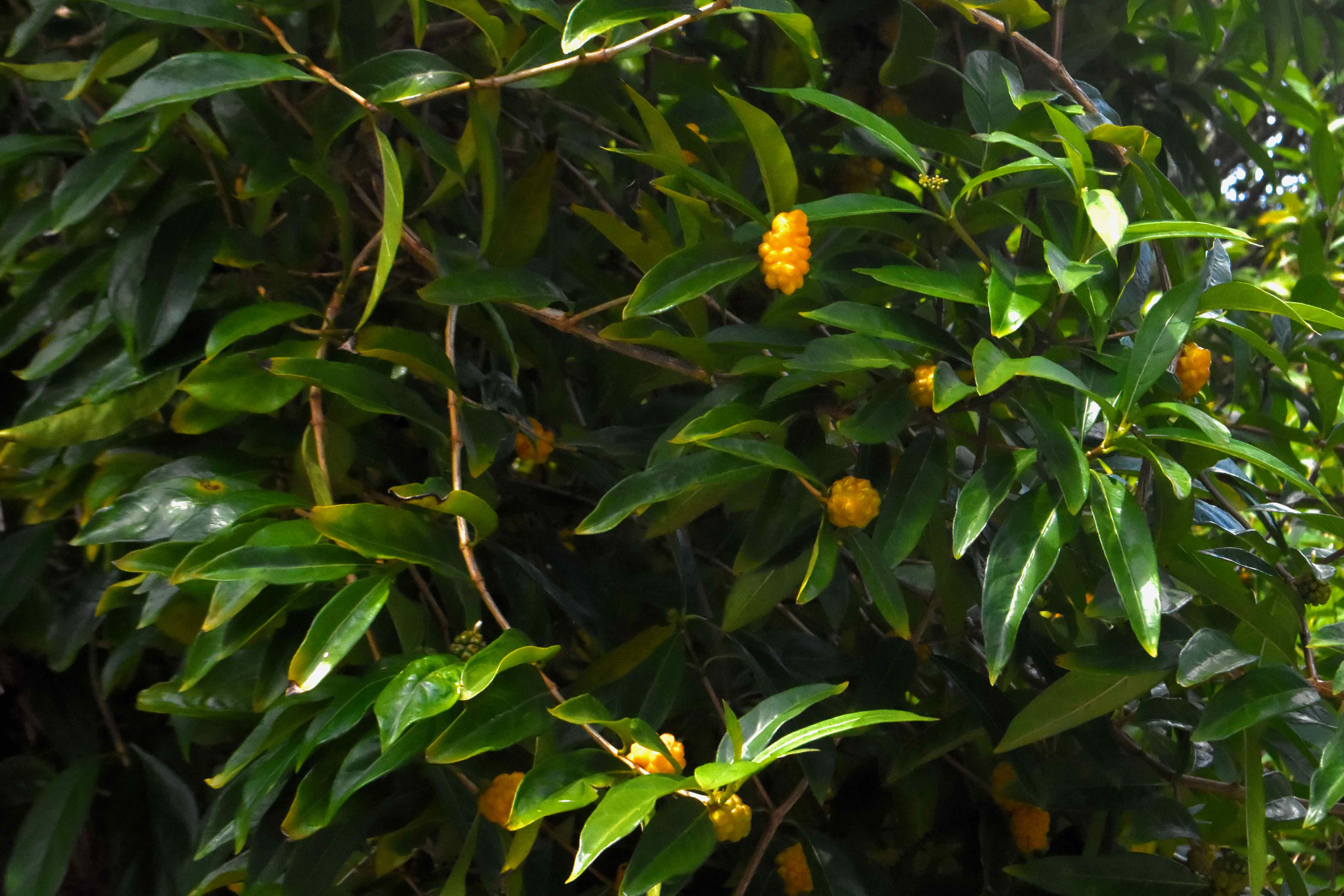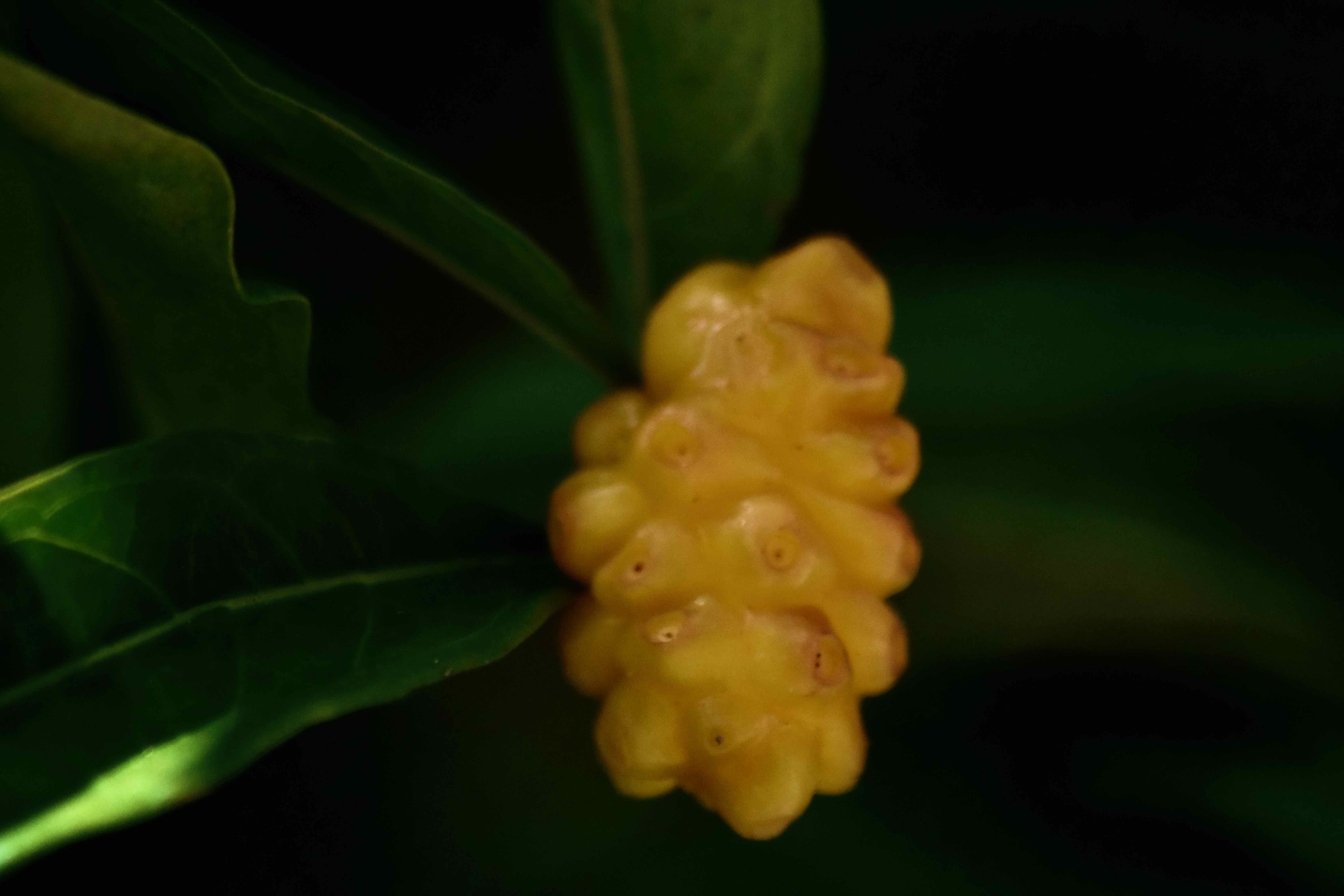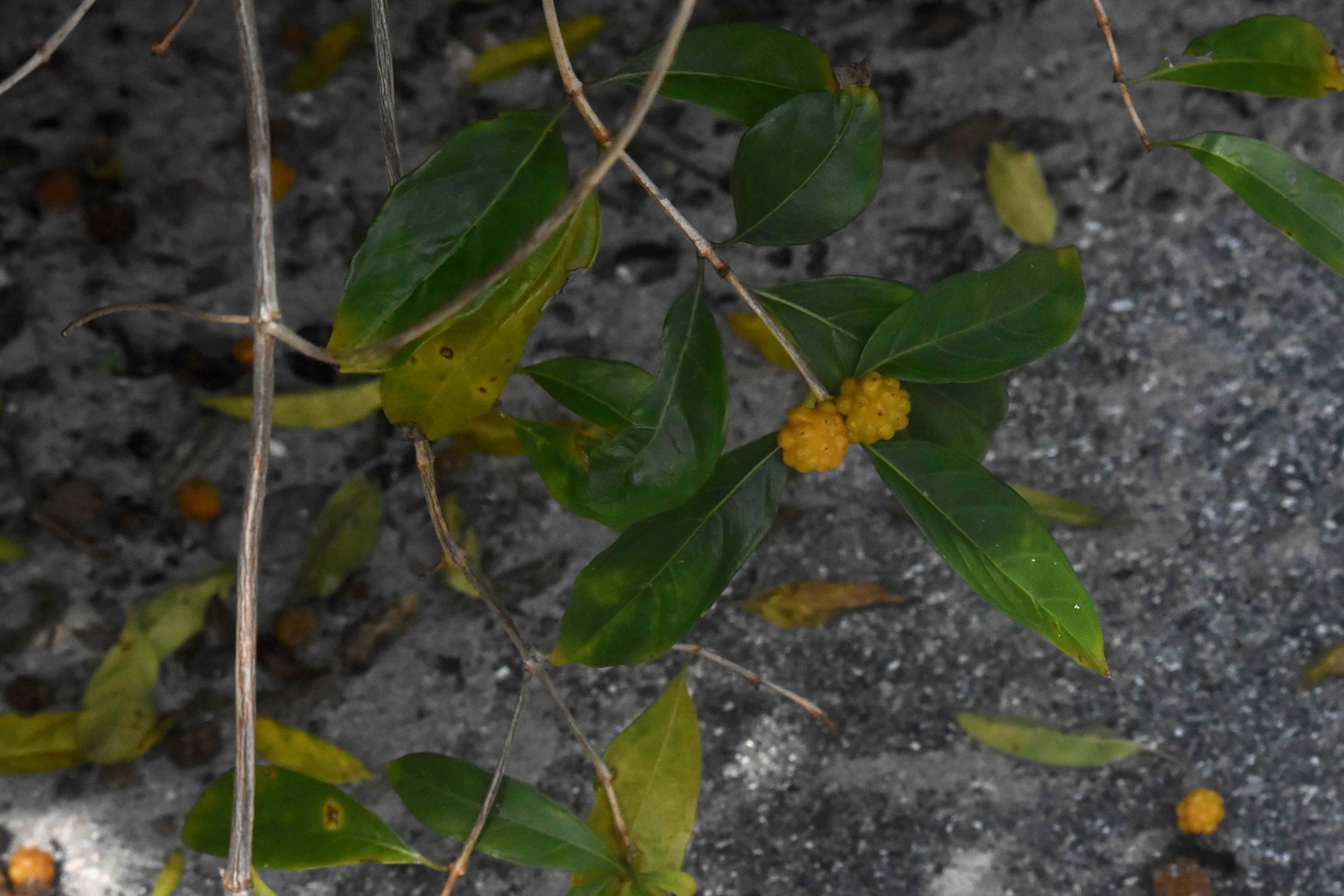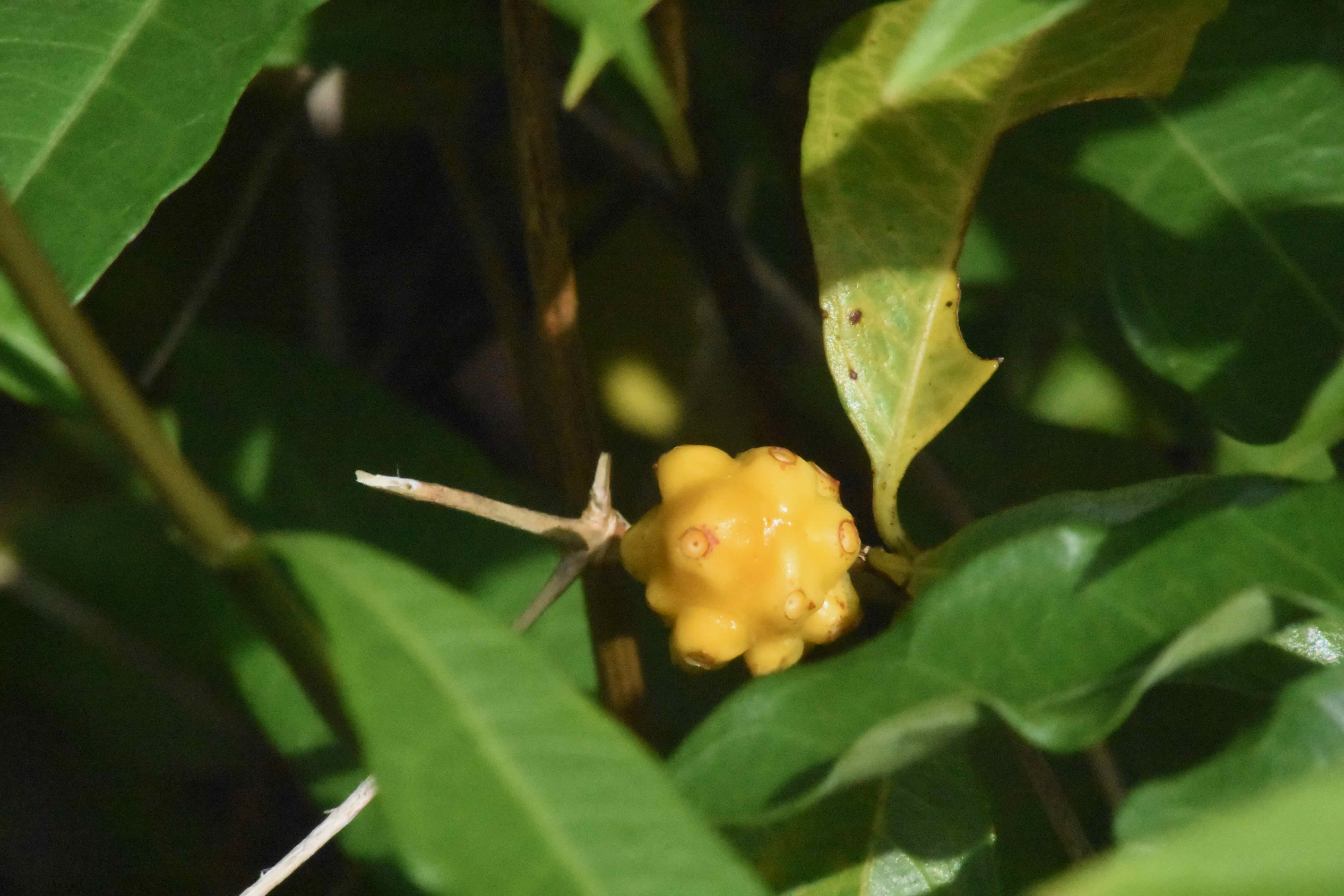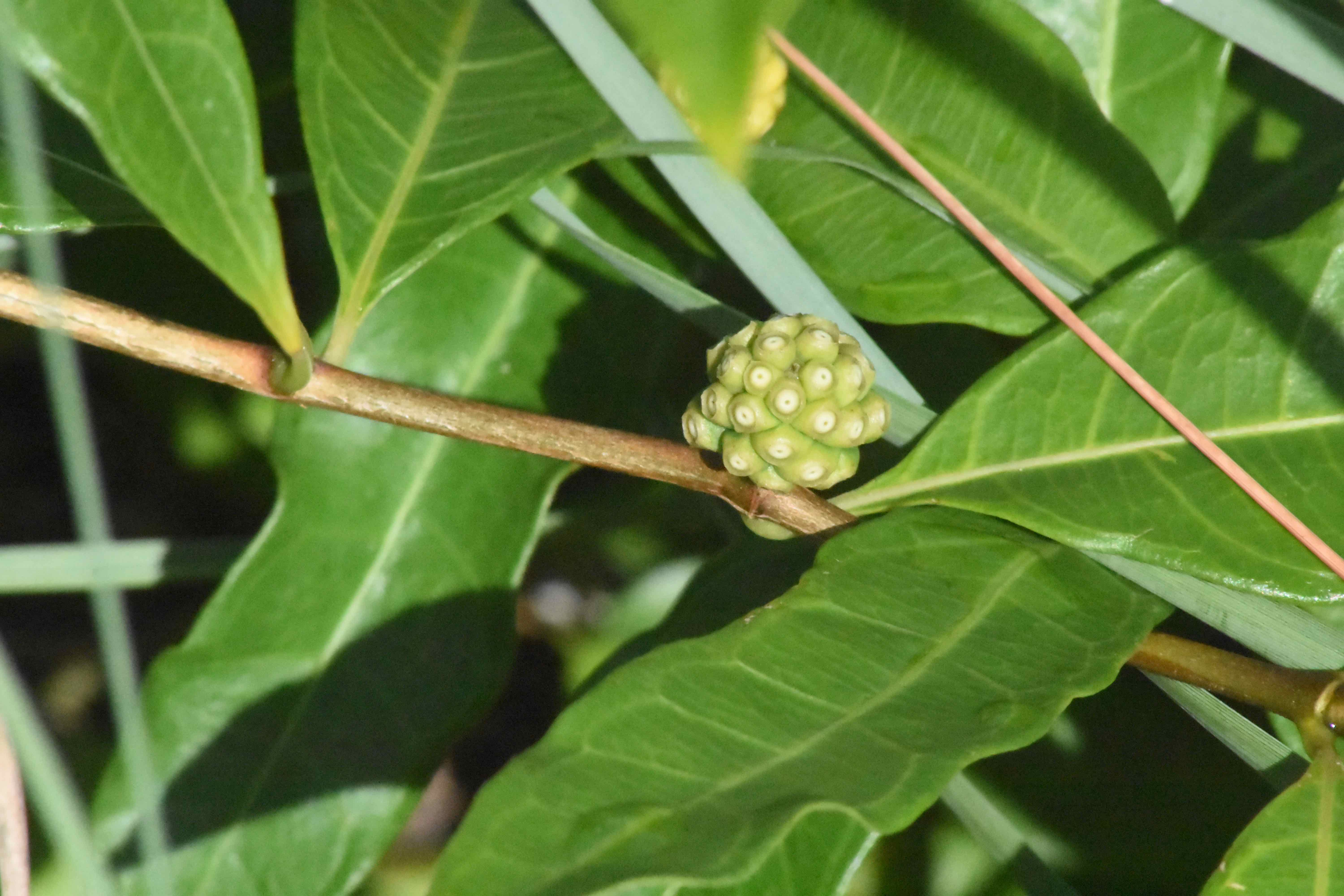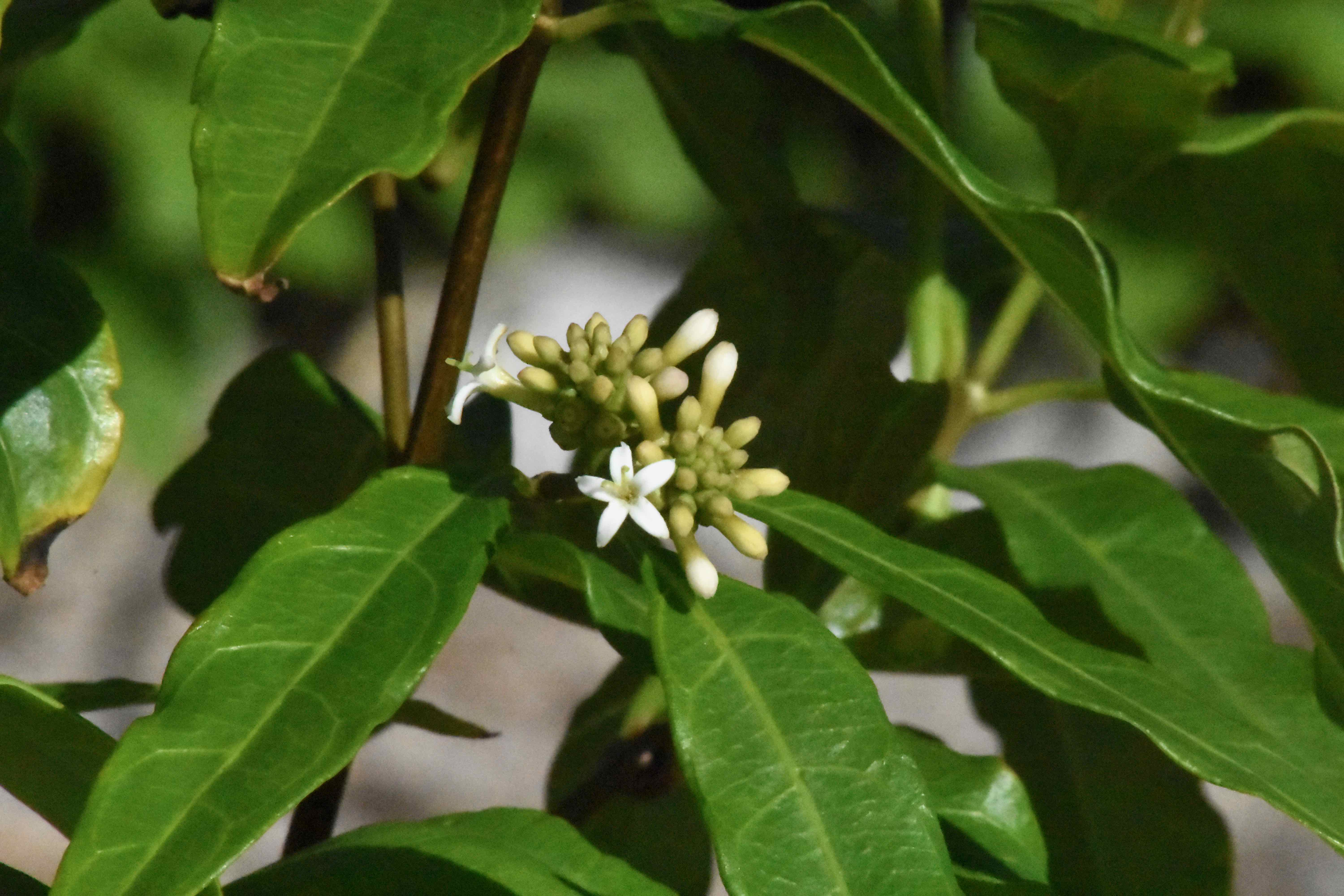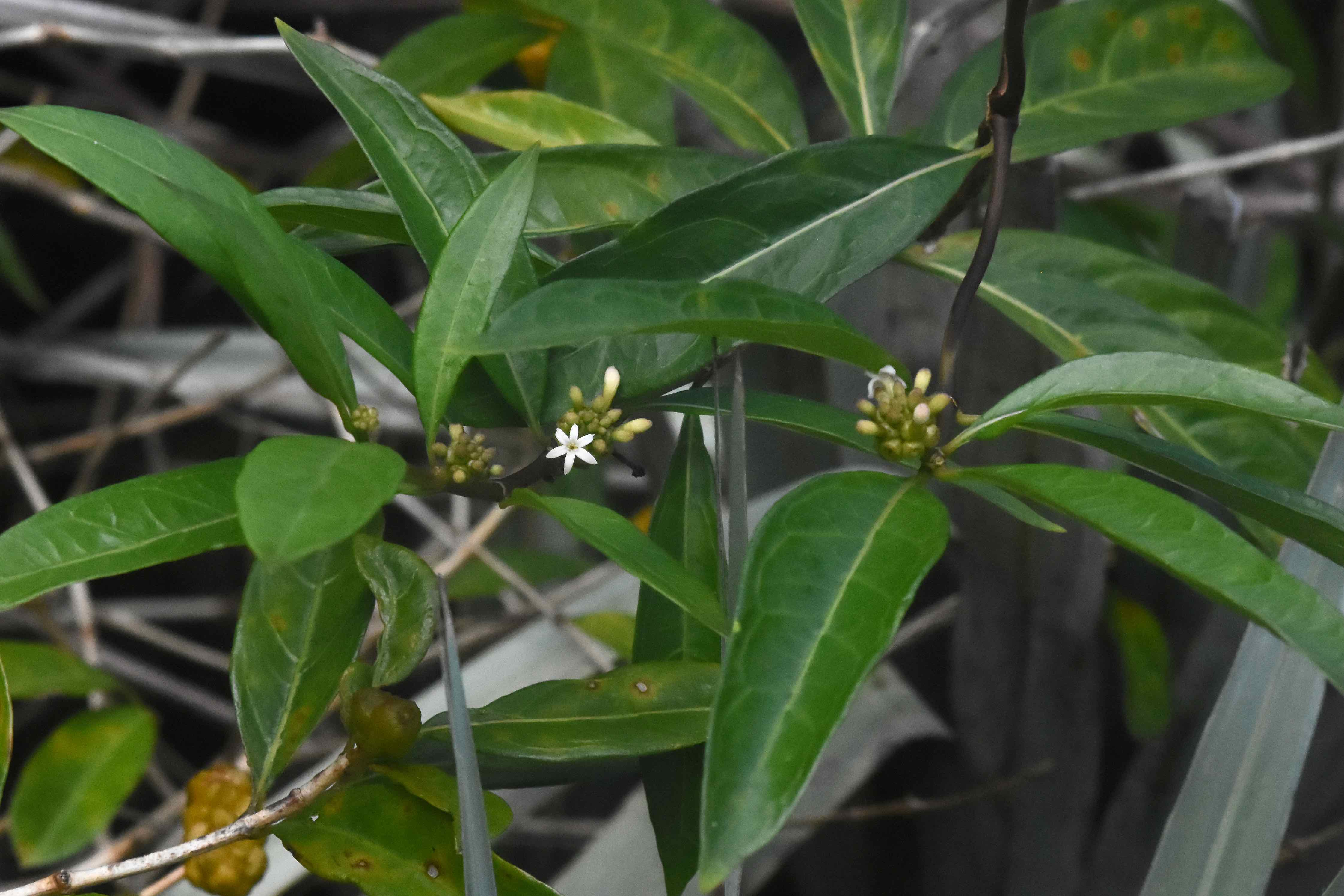
Mouse's Pineapple, photographed at Ocean Reef Park, Riviera Beach, Palm Beach County, in September 2016.
We have to admit that we don't have a clue as to how this plant, scientifically known as Morina royoc, caught the name mouse's pineapple other than the fact that the fruit vaguely looks like a miniature pineapple, mouse-sized if you will. It takes a considerable leap of imagination to make the connection.
It's also known by several other equally strange names, including cheese shrub and cheese weed, but mouse's pineapple is our favorite. It is a Florida native, found from the central part of the Peninsula — roughly Brevard and Hillsborough counties — southward to the Keys, oddly skipping a few counties on both coasts. We've seen it mostly in beach settings but it grows somewhat inland as well. Its native range extends to the Caribbean, Mexico, Central America and South America.
The plant itself is a perennial vine or shrub that can clamber over its neighbors, a bit of a sprawler that can grow 10 feet tall or more. The leaves are long, dark green and glossy. The flowers are small, with five white petals and a yellow-green center. They bloom year round, but they're not going to impress anyone with their beauty. The fruit, technically called a syncarp, is small, about the size and shape of a rasberry, first green then turning pineapple yellow as it ripens. The roots are yellow to orange in color, inspiring another of its common names. Mouse's pineapple is cultivated but mainly for restorations. It needs full sun to light shade, and tolerates neither drought nor salt. It's not particularly picky when it comes to soil quality. It prefers moist, well-drained soil but not necessarily high nutrient content.
A proverbial host of butterflies draw nectar from mouse's pineapple, including the Bahamian swallowtail and cassius blue, gulf fritillary, Julia and many, many more. However, it appears to be a host, as in caterpillar host, for none. Mouse's pineapple is high in protein, and an important food for key deer.
Allegedly, the fruit is edible, although we're not sure exactly how good it tastes. But there is another part of the plant that is edible, the root. It's used as one ingredient in a fermented Cuban drink called pru. The drink, which is said to be delicious as well as medicinal, came to the island from Haiti by way of French settlers, their black slaves and freed blacks who immigrated there in the late 18th century. Pru is also called pru oriental.
Mouse's pineapple has been used in traditional medicine in the Caribbean and elsewhere to treat a variety of ailments, but it's not as well known in this country as its cousin, Morinda citrifolia, AKA noni. In places, mouse's pineapple is called strong back because of its use as a tonic. In said to be an aphrodisiac and a cure for male sexual problems. Some scientific studies show mouse's pineapple to have antibacterial, antifungal and antioxidant properties, the active chemicals being dichloromethane and several anthraquinones.
Other common names include Indian root, yellow root, redgal and rhubarb of the land. It is a member of Rubiaceae, the coffee family.
Click on photo for larger image
Links for Mouse's Pineapple

